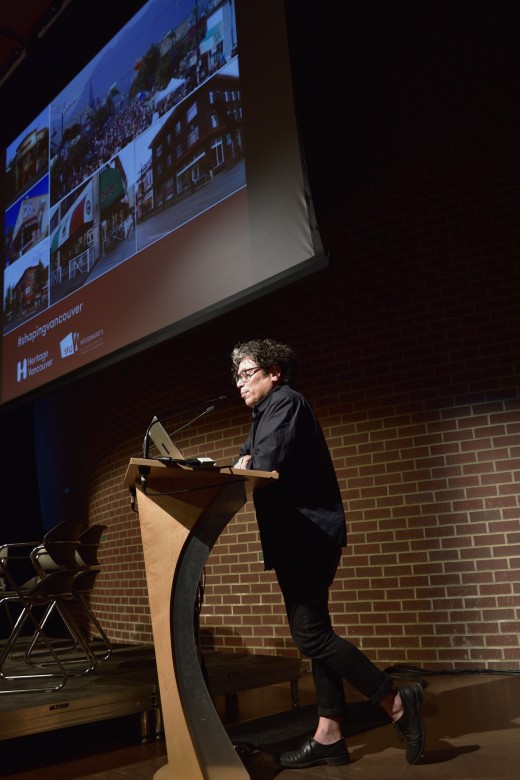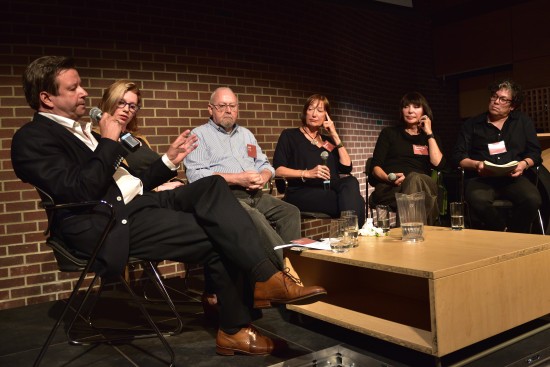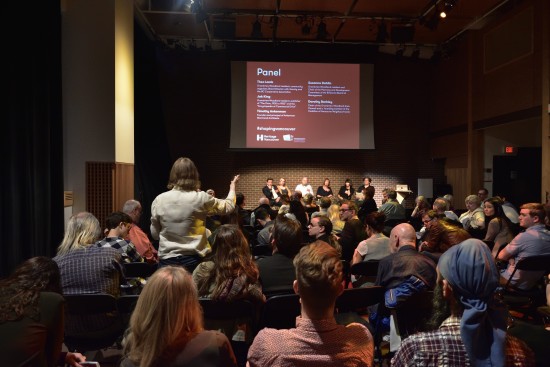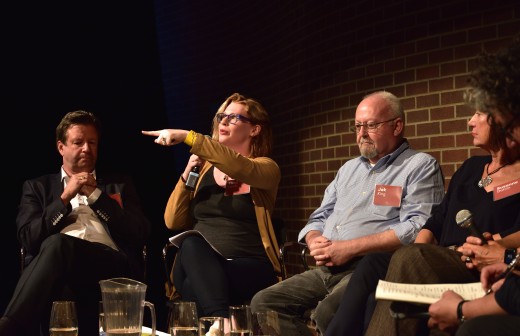Shaping Vancouver 2016: Conversation 2
What’s So Special About ‘The Drive’?
Moderator
Panelists
The need for affordable housing alongside increased densification.
Panelists emphasized that Commercial Drive’s vibrant social culture is created by its diverse residents. This diversity has been possible because of affordable housing options in a city that is increasingly characterized as unaffordable. Panelists agreed that there is an undeniable need for increased densification in the Commercial Drive area, but also stressed that future developments must allow for diverse tenants – restoration and renovation of existing dwellings was suggested as a sustainable strategy that could increase density while still conserving the existing architectural heritage. The three story walk-up buildings found west of The Drive were discussed as possible sites of such renovation; however, it was noted that it may be difficult to provide an incentive significant enough to inspire a landowner to develop in this way. Imposing further rent regulations was also proposed as a way to combat unaffordability. This prompted a discussion on the importance of not allowing quick financial gains to be the largest influence on development, and the essential input of the residents.


The need for gentle densification
Jak King noted that a history of slow development is what has characterized The Drive and fast paced developments will ultimately harm the character that has been established. Further, King mentioned that as a community, the Commercial Drive area is already fairly dense, and we should be investigating how we can utilize these spaces better, rather than build up to accommodate more. Javier Campos offered the discussion point that residents may need to be more critical of their own spatial needs, to create realistic expectations of their neighbourhoods. Panelists warned that increasing the density of buildings directly on Commercial Drive would hurt the walkability of this neighbourhood, as the shorter buildings create an informal and welcoming atmosphere that characterizes The Drive. Tim Ankenman suggested that it will be important to establish clear development policies to any community plans as unclear parameters could lead to rapid neighbourhood changes. A documented vision will allow for slow, incremental changes towards a defined goal.
The need for community input and guidance on development
All panelists strongly agreed that the values and needs of the people already living in The Drive need to be discussed, and felt that there has yet to be an opportunity for residents to be a part of any discussion. Furthermore, there was agreement that a broader vision for the future Commercial Drive be discussed before establishing specifics, such as building heights, as such details should follow from the overall vision. Taking inventory of the composition of Commercial Drive and the residential areas around it could provide insight to new developments on what comprises a resilient community. Panelists agreed that an in-residence urban planner would ensure that the community’s voice was heard. Dorothy Barkley noted that an in-residence planner would be an individual who knows the community and greater understands its needs. Jak King added that such a position had existed previously on The Drive, allowing people to come forward with ideas and the planner ensuring workability of these ideas.

The importance of maintaining history to ensure livability on The Drive
Preserving the significant historical architecture along The Drive and the design of existing buildings providing guidance for future development was a focus of all panelists – Panelists suggested that the smaller size of storefronts found along The Drive allows for an eclectic collection of businesses which encourages pedestrian traffic. Panelists discouraged developments that would take up entire blocks, as these developments could negatively impact the walkability of these areas. Panelists also discussed the intangible heritage of The Drive: how it influences the atmosphere of Commercial Drive today, and why it represents the traits most at risk when developing. Campos suggested that The Drive has always been similar to a living room, an informal and welcoming space, where people can gather and socialize. This quality has allowed people to live in smaller dwellings as they also live within their extended community spaces. Panelists warned that developing high-end condominiums with no regard to this intangible heritage could lead to resident isolation and destroy this community history. The sense of space that residents of The Drive feel is well demonstrated in the usage of public parks. Panelists noted that while in some areas of the city, parks and public spaces go unused, The Drive could actually be described as park deficient. The success of these public spaces has been largely attributed by the panelists to the immersive community culture that has been established over time on The Drive.


The recent development at Commercial and Victoria Division (Porter Rental Apartments) provides rental units to 1000+ residents, and successfully created a sociable atmosphere. Many residents are frequent users of nearby Trout Lake (Vancouver’s 2nd largest green space), and this proximity has contributed to the building’s success. Should we be pairing green spaces with increased density developments?
Why would it be a bad thing to build a large condominium tower at Commercial-Broadway?
More and more renters are facing evictions, and then are faced with the difficult challenge of finding an alternative rental space. As a neighbourhood, we are losing diversity. How can we maintain our diversity?
In regard to the three story walk-ups found west of The Drive, landowners are currently only able to have one penthouse suite on the top floor to house the landowner; by allowing landowners to have full capacity of the fourth story it could increase the buildings density by up to 30%. Could this be applied around The Drive?
Commercial Drive has enough density to accommodate the coming residents, and there are many examples of gentle densification already occurring, why is the neighbourhood facing such extremes amount of pressure to develop more?
As a community, we are nervous and insecure about what change could mean to the neighbourhood ‘vibe’. What have other cities done when facing development?
How do the panelists envision buildings on the Drive? Change may be inevitable but maybe we should be dispelling the idea that everyone needs to live in very close proximity to The Drive, this would allow us to accommodate for more.
This audience member posed that it is not a fear of change that the neighbourhood is experiencing but rather an impact on the walkability of this neighbourhood. She noted that having close access to green spaces as well as having shorter buildings plays a key role in the sociability and connectedness found in this community. She suggested that a tower at Commercial-Broadway would create a more isolating pedestrian experience and lead to development moving further north down The Drive.
There is significant architectural history found on The Drive – shouldn’t we be advocating for heritage components of Commercial Drive?
It is important that whole block developments are not permitted on The Drive - smaller storefronts allow for diverse businesses and deter big box stores that residents of The Drive are opposed to.
We acknowledge the financial assistance of the Province of British Columbia. Thank you to SFU’s Vancity Office of Community Engagement for co-presenting the series.
All photo credits go to roaming-the-planet.